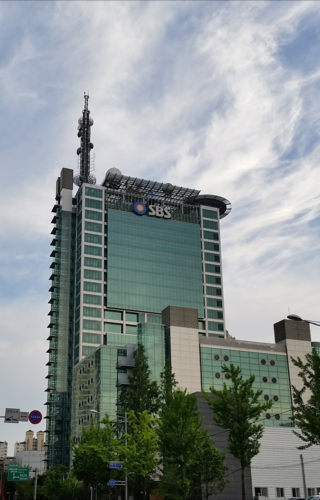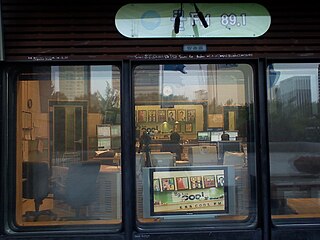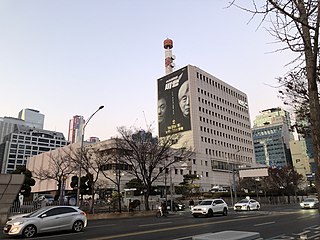| Name | Owner | Launch | Covers | Genre | Description |
|---|
| MBC TV | Munhwa Broadcasting Corporation | 1 August 1969;54 years ago (1969-08-01) | Seoul Capital Area | City news and entertainment | The Channel's callsign is HLKV-DTV and HLKV-UHDTV.
MBC Network Headquarters |
| Chuncheon MBC TV | Chuncheon Munhwa Broadcasting Corporation | 20 January 1983;41 years ago (1983-01-20) | Northern Yeongseo | Local entertainment and news | The Channel's callsign is HLAN-DTV. |
| Wonju MBC TV | Wonju Munhwa Broadcasting Corporation | 26 November 1987;36 years ago (1987-11-26) | Southern Yeongseo | Local entertainment and news | The Channel's callsign is HLSB-DTV and HLSB-UHDTV. |
| MBC Gangwon-yeongdong TV (Gangneung) | MBC Gangwon-yeongdong Broadcasting Corporation | 6 September 1985;38 years ago (1985-09-06) | Northern Yeongdong | Local entertainment and news | The Channel's callsign is HLAF-DTV and HLAF-UHDTV.
Formerly known as Gangneung MBC, renamed to MBC Gangwon-yeongdong (Gangneung) in 2015. |
| MBC Gangwon-yeongdong TV (Samcheok) | 27 November 1987;36 years ago (1987-11-27) | Southern Yeongdong | Local entertainment and news | The Channel's callsign is HLAQ-DTV.
Formerly known as Samcheok MBC, renamed to MBC Gangwon-yeongdong (Samcheok) in 2015. |
| Daejeon MBC TV | Daejeon Munhwa Broadcasting Corporation | 24 April 1971;52 years ago (1971-04-24) | Daejeon, Sejong City and Chungnam | Local entertainment and news | The Channel's callsign is HLCQ-DTV and HLCQ-UHDTV. |
| MBC Chungbuk TV (Cheongju) | MBC Chungbuk Broadcasting Corporation | 1 April 1983;40 years ago (1983-04-01) | Southern Chungbuk | Local entertainment and news | The Channel's callsign is HLAX-DTV.
Formerly known as Cheongju MBC, renamed to MBC Chungbuk (Cheongju) in 2016. |
| MBC Chungbuk TV (Chungju) | 17 November 1987;36 years ago (1987-11-17) | Northern Chungbuk | Local entertainment and news | The Channel's callsign is HLAO-DTV.
Formerly known as Chungju MBC, renamed to MBC Chungbuk (Chungju) in 2016. |
| Gwangju MBC TV | Gwangju Munhwa Broadcasting Corporation | 29 August 1970;53 years ago (1970-08-29) | Gwangju and Central Northern Jeonnam | Local entertainment and news | The Channel's callsign is HLCN-DTV and HLCN-UHDTV. |
| Mokpo MBC TV | Mokpo Munhwa Broadcasting Corporation | 16 November 1987;36 years ago (1987-11-16) | Southwest Jeonnam | Local entertainment and news | The Channel's callsign is HLAM-DTV. |
| Yeosu MBC TV | Yeosu Munhwa Broadcasting Corporation | 21 November 1987;36 years ago (1987-11-21) | Eastern Jeonnam | Local entertainment and news | The Channel's callsign is HLAT-DTV. |
| Jeonju MBC TV | Jeonju Munhwa Broadcasting Corporation | 23 April 1971;52 years ago (1971-04-23) | Jeonbuk | Local entertainment and news | The Channel's callsign is HLCX-DTV. |
| Daegu MBC TV | Daegu Munhwa Broadcasting Corporation | 18 July 1970;53 years ago (1970-07-18) | Daegu, Midwest Southern Gyeongbuk | Local entertainment and news | The Channel's callsign is HLCT-DTV and HLCT-UHDTV. |
| Andong MBC TV | Andong Munhwa Broadcasting Corporation | 23 November 1987;36 years ago (1987-11-23) | Northern Gyeongbuk | Local entertainment and news | The Channel's callsign is HLAW-DTV. |
| Pohang MBC TV | Pohang Munhwa Broadcasting Corporation | 24 November 1987;36 years ago (1987-11-24) | East Coast Gyeongbuk. | Local entertainment and news | The Channel's callsign is HLAV-DTV. |
| Busan MBC TV | Busan Munhwa Broadcasting Corporation | 24 January 1970;54 years ago (1970-01-24) | Busan | Local entertainment and news | The Channel's callsign is HLKU-DTV and HLKU-UHDTV. |
| Ulsan MBC TV | Ulsan Munhwa Broadcasting Corporation | 25 January 1971;53 years ago (1971-01-25) | Ulsan | Local entertainment and news | The Channel's callsign is HLAU-DTV and HLAU-UHDTV. |
| MBC Gyeongnam TV (Jinju) | MBC Gyeongnam Broadcasting Corporation | 20 November 1987;36 years ago (1987-11-20) | Western Gyeongnam | Local entertainment and news | The Channel's callsign is HLAK-DTV
Formerly known as Jinju MBC, renamed to MBC Gyeongnam (Jinju) in 2011. |
| MBC Gyeongnam TV (Changwon) | 5 October 1972;51 years ago (1972-10-05) | Eastern Gyeongnam | Local entertainment and news | The Channel's callsign is HLAP-DTV
Formerly known as Masan MBC(1971-2010) / Changwon MBC(2010-2011), renamed to MBC Gyeongnam (Changwon) in 2011. |
| Jeju MBC TV | Jeju Munhwa Broadcasting Corporation | 1 August 1970;53 years ago (1970-08-01) | Jeju | Local entertainment and news | The Channel's callsign is HLAU-DTV.
Formerly known as Namyang MBC, renamed to Jeju MBC in 1984. |









